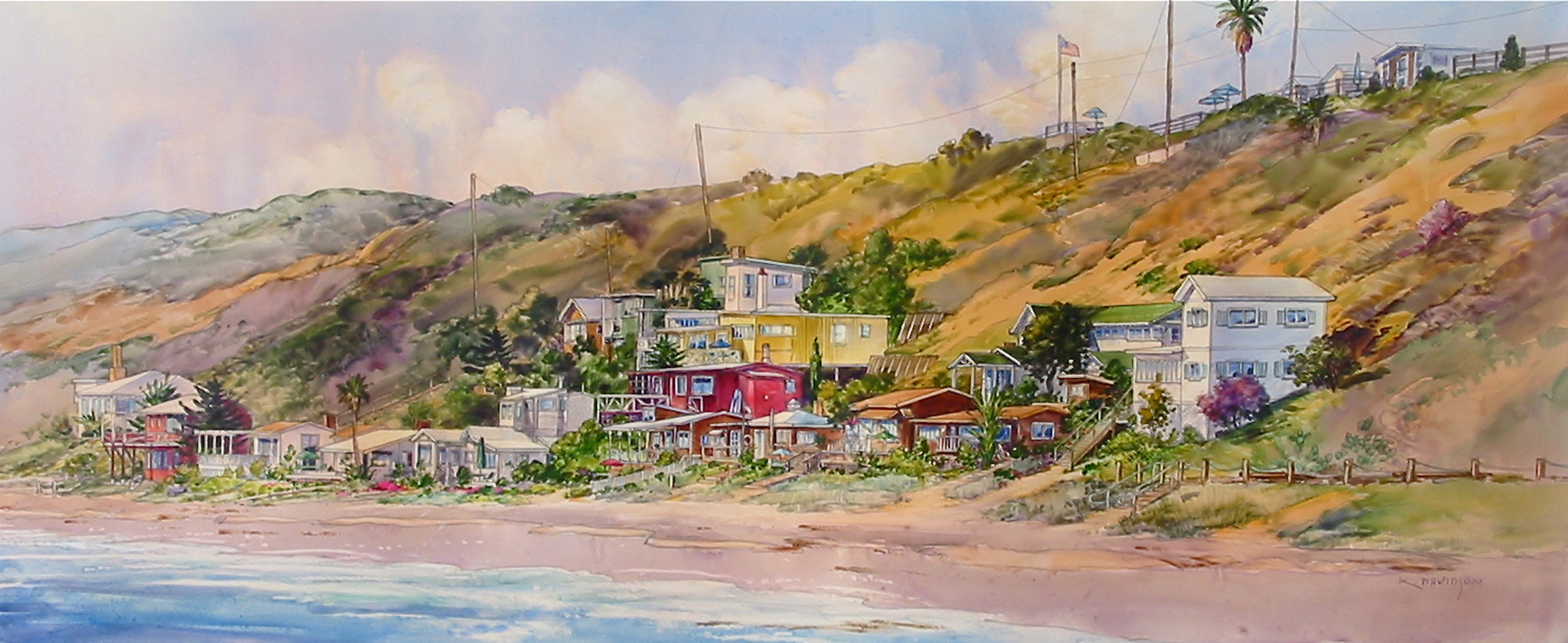Preserving a Community Treasure
By Gina Dostler
A published author and active volunteer in community tree projects, Brandon Elrod, president of Costa Mesa’s Pacific Coast Arborists and Consultants, has received multiple awards from the Tree Care Industry Association.
Q: Why did you become an arborist?
A: When I was studying landscape architecture, I found myself outdoors between classes and began to think I’d prefer working out here amongst the trees than sitting in an office. At the time I didn’t realize I could do it for a living. Yet here I am today amongst the trees running Pacific Coast Arborists and Consultants. We deliver a complete range of commercial services that enhance the health, beauty and safety to trees on virtually any property. We work on business and industrial parks, housing developments, HOA properties, resorts, retail centers and golf courses.
Q: Do most people or businesses understand about tree care?
A: Since you’ll find us under arborist, most of the clientele we have are pretty savvy and realize the steps, time and money required to keep and maintain trees. But to answer your question, many people don’t. The most grievance offense committed is topping trees and it is done in ignorance basically. Many people want to see results for their money, and the more the tree is cut, the better they feel about the cost. Topping trees is the indiscriminate lopping off of an end of a branch at a random place on the tree, leaving stumps and the tree virtually bare.
Q: Why is this not good?
A: Well, if the goal first of all is to reduce the size of the tree, the exact opposite happens. It will actually push out more shoots with a vengeance, replacing the cut off limbs with the same mass, but in a weaker form. Within months the tree will be covered again and will require cutting, again. And these new fast growing branches are called water sprouts. But these sprouts act differently than regular growth from correct trimming. These little shoots sprout up around the cut limb, growing where a branch isn’t meant to grow. And they don’t behave like a branch, but more like a new sapling, where the entire tree’s energy is put into vigorous growth to replace its lost foliage, affecting the trees regular growth and therefore its structure. But most importantly, the cut limbs are entry points to decay. Also, some trees have no reaction to the topping and don’t put out any water sprouts. You might wait a very long time for it to put out foliage again, if it does at all.
Q: What would be the proper way to cut?
A: Using a lateral cut. This is a method of cutting a branch back to the next limb or lateral growing branch. Most trees in a forest self prune this way. Specific ridges in the bark start to callous over and wall off the cut. These sites are the bark collar and branch bark ridge and are two points in tree architecture that inhibit decay from entering the tree trunk. And by pruning back specific branches, the natural crown of the tree is retained.
Q: How is tree health important to our community?
A: From an arborist’s point of view, trees have a lot of benefits. They convert air pollution, give us shade and generate oxygen to name a few. But what most people underestimate in value is the community atmosphere. Trees are the backdrop for celebrations and community identity. Think of a quaint downtown and you’ll more than likely picture big green trees on its main street. So when trees become a commodity rather than a treasure, the selection of trees and where to plant become irrelevant. If you just throw in trees without giving thought to its growth but instead to its cost, more than likely the wrong tree ends up in the wrong place. Selecting the right tree for the right spot enables it to reach its potential and live a long time; versus struggling for health or outgrowing its space.
Q: What poses the greatest challenge in nurturing trees in Southern California?
A: It’s both the water and soil combination. We have such a heavy clay soil and our watering cycle is not set for stress. The typical irrigation is five minutes at a time, once a day. So it is never enough water to penetrate into the root zone of a tree. So the trees tend to grow their roots into sewer lines or other water sources. Ninety-nine percent of their roots are pretty shallow, within the top 6-8 inches of soil and spread out far to provide leverage and stability. So ideally they should be watered with a deep watering once a week. Challenge here is finding the balance with the right frequency that will water the trees and not over water the lawns. Trees need their soil to dry out between watering. This mimics what the tree would receive naturally from rainfall. The constant shallow watering for grass predisposes the trees to fungal infections.
Q: What is your role as an arborist and why choose one instead of using a gardener?
A: I’m a commercial arborist usually working in the settings of office buildings and the aesthetics surrounding them, planning multi-year management of the trees, pruning for safety and treating any tree health issues that come up. I’m more diagnostic and hands-on than an arborist employed by a city. Using an arborist might cost more but they are insured and bonded. If something happens, the contracted arborist has insurance, stability and the means to take care of the problem. And then there is the better quality in the tree service with the knowledge and experience garnered as an arborist.
CONTACT INFORMATION
Brandon Elrod
President
Pacific Coast Arborists and Consultants
1599 Superior Ave. Suite B1
Costa Mesa, CA 92627
Phone: 949-631-8733
http://www.pacificcoastarborists.com
photo captions:
Pic 1 – An arborist ascends a tree.
An arborist installs a support system in a tree.



